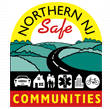Beginning Drivers’ Crashes Differ
Teen drivers have the highest crash risk of any age group
Teen drivers have the highest crash risk of any age group. Per mile traveled, they have the highest involvement rates in crashes, from crashes involving property damage only to those that are fatal.
The problem is worst among 16-year-olds, who have the most limited driving experience and an immaturity that often results in risk-taking behind the wheel. The characteristics of 16-year-olds’ fatal crashes shed light on the problem:
|
Percentage of fatal crashes by characteristic, 2004 |
|||
|
Driver Age: |
16 |
17-19 |
20-49 |
|
Driver error |
78 |
69 |
55 |
|
Speeding |
39 |
33 |
23 |
|
Single vehicle |
52 |
45 |
39 |
|
3+ occupants |
29 |
24 |
18 |
|
Drivers killed with .08+ BAC |
13 |
25 |
44 |
|
Sources - FARS, NHTSA 2004 |
|||
Driver error: Compared with crashes of older drivers, those of 16-year-olds more often involve driver error.
Speeding: 16-year-old drivers have a higher rate of crashes in which excessive speed is a factor.
Single-vehicle crashes: More of 16-year-olds’ fatal crashes involve only the teen’s vehicle. Typically these are high-speed crashes in which the driver lost control.
Passengers: 16 year-olds’ fatal crashes are more likely to occur when other teenagers are in the car. The risk increases with every additional passenger.
Alcohol: Although this is a problem among drivers of all ages, it’s actually less of a problem for 16-year-olds. Typically, less than 15 percent of fatally injured 16-year-old drivers have blood alcohol concentrations of .08 grams per deciliter or greater. However, alcohol quickly becomes a problem in the later teen years.
Night driving: This is a high-risk activity for beginners. Per mile driven, the nighttime fatal crash rate for 16-year-olds is about twice as high as during the day.
Low belt use: Teenagers generally are less likely than adults to use safety belts.
INDEPENDENCE WITHOUT EXPERIENCE IS COSTLY
Teenagers perceive a driver’s license as a ticket to freedom. It’s momentous for parents, too. Though they are often aware of 16-year-olds’ high crash risks, they’re relieved not to have to chauffeur their children around anymore. But the price is steep. Crashes are the leading cause of death among American teens, accounting for more than one third of all deaths of 16- to 18-year-olds.
An effective way to reduce this toll is to enact graduated licensing, under which driving privileges are phased in to restrict beginners’ initial experience behind the wheel to lower-risk situations. The restrictions gradually are lifted, so teenagers are more experienced and mature when they get their full, unrestricted licenses.
Graduated systems that are well designed restrict night driving, limit teen passengers, set zero alcohol tolerance, and require a specified amount of supervised practice during the initial phase. Graduated licensing laws have reduced teens’ crash rates in the United States, Canada, and New Zealand. But not all States have such laws, and the laws aren’t all strong.
What Parents of Teenagers Can Do
Parents must go beyond the graduated driving licensing regulations to increase their teenagers driving experience. Restrictions should be lifted when their child has matured to take on the role of driving. In particular parents should:
Do not rely solely on driver education. High school driver education may be the most convenient way to learn skills, but it doesn’t necessarily produce safer drivers. Poor skills aren’t always to blame. Teen attitudes and decision-making matter more. Young people naturally tend to rebel. Teens often think they’re immune to harm, so they don’t use safety belts as much and they deliberately seek thrills like speeding. Training and education don’t change these tendencies. Peer influence is great but parents have much more influence than they are typically given credit for.
Know the law. Become familiar with restrictions on beginning drivers. Enforce the rules. To learn about the law in your State, go to www.iihs.org/safety_facts/state_laws.
Restrict night driving. Most young drivers’ nighttime fatal crashes occur from 9 p.m. to midnight, so teens shouldn’t drive much later than 9. The problem isn’t just that such driving requires more skill. Late outings tend to be recreational, and even teens who usually follow the rules can be easily distracted or encouraged to take risks.
Restrict passengers. Teen passengers in a vehicle can distract a beginning driver and/or lead to greater risk-taking. Because young drivers often transport their friends, there’s a teen passenger problem as well as a teen driver problem. About 6 of every 10 teenage passenger deaths (59%) during 2003 occurred in crashes with a teen driver. While night driving with passengers is particularly lethal, many fatal crashes with teen passengers occur during the day. The best policy is to restrict teenage passengers, especially multiple teens, all the time.
Supervise practice driving. Take an active role in helping your teenager learn how to drive. Plan a series of practice sessions in a wide variety of situations, including night driving. Give beginners time to work up to challenges like driving in heavy traffic or on the freeway. Supervised practice should be spread over at least six months and continue even after a teenager graduates from a learner’s permit to a restricted or full license.
Remember that you’re a role model. New drivers learn a lot by example, so practice safe driving. Teens with crashes and violations often have parents with poor driving records.
Require safety belt use. Don’t assume that belt use when you’re in the car with your 16-year-old means belts will be used all the time, especially when your child is out with peers. Remember that belt use is lower among teenagers than older people. Insist on belts all the time.
Prohibit drinking. Make it clear that it’s illegal and highly dangerous for a teenager to drink alcohol. While alcohol isn’t a factor in most crashes of 16-year-old drivers, even small amounts of alcohol are impairing for teens.
Choose vehicles for safety, not image. Teenagers should drive vehicles that reduce their chances of a crash and offer protection in case they do crash. For example, small cars don’t offer the best protection in a crash. Avoid cars with performance images that might encourage speeding. Avoid trucks and sport utility vehicles — the smaller ones, especially, are more prone to roll over.

Additional Resources
KJ Feury RN APN, C
karenjean.feury@atlantichealth.org
Phone: 973-971-4327
Fax: 973-290-7350




